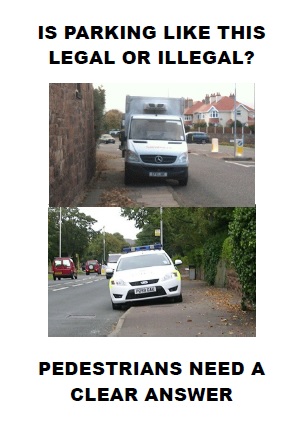
Who is responsible for pedestrian safety in the UK?
A case study on the legality of footway parking
Comment and conclusions

The most vulnerable road users have been asking for help for some time. Having nowhere safe to walk in the midst of heavy motor traffic can be a frightening experience for anyone, but is even more so for those with disabilities or with responsibilities for children.
The conclusions from the survey are
- The most common outcomes were
(a) no response,
(b) delegation to someone else,
(c) a vague response, and
(d) advice to contact someone else.
These responses mirror the anecdotal experiences of people in Merseyside and around the UK who have contacted those in positions of authority about the problem of footway parking. - There seems to be collective failure of those responsible for the safety of pedestrians to take that responsibility seriously. Very few of the individuals surveyed appeared to see themselves as having any responsibility for the safety of pedestrians.
- There seems to be a stark contrast between attitudes to pedestrian safety and attitudes to the safety of other modes of travel.
- In the few clear answers given, the consensus was that footway parking is generally illegal through the prohibition of driving on footways, but it can be legalised in particular locations.
- Those who care about pedestrian safety should not rely on those in authority to take action to protect pedestrians.
The conclusion from the document review was that footway parking is generally illegal through the prohibition of driving on footways, but it can be legalised in particular locations via Traffic Regulation Orders.
Several of the responses claimed credit for a fall in road casualties, but none of these addressed the question of whether the fall in reported pedestrian casualties is merely due to people walking less.
